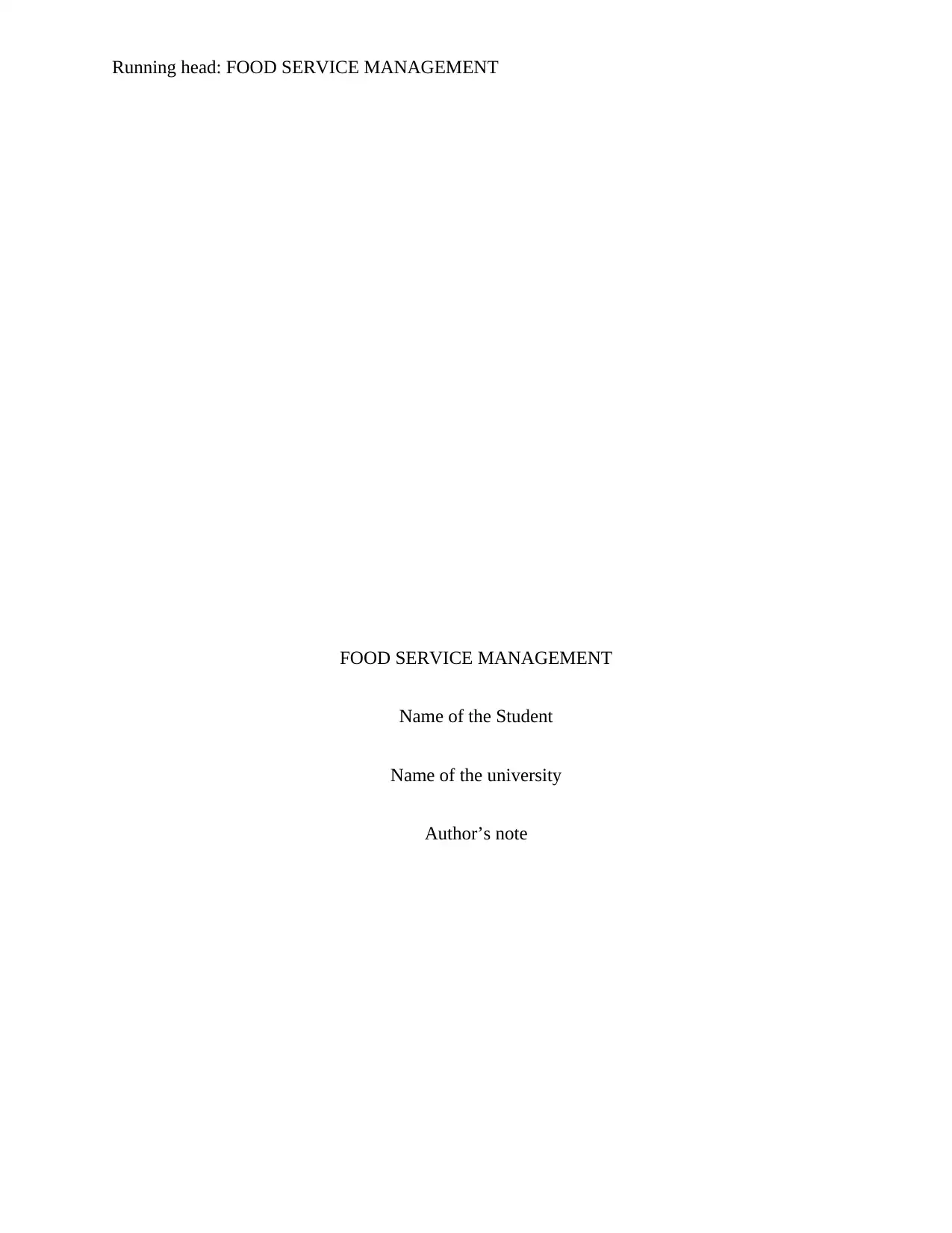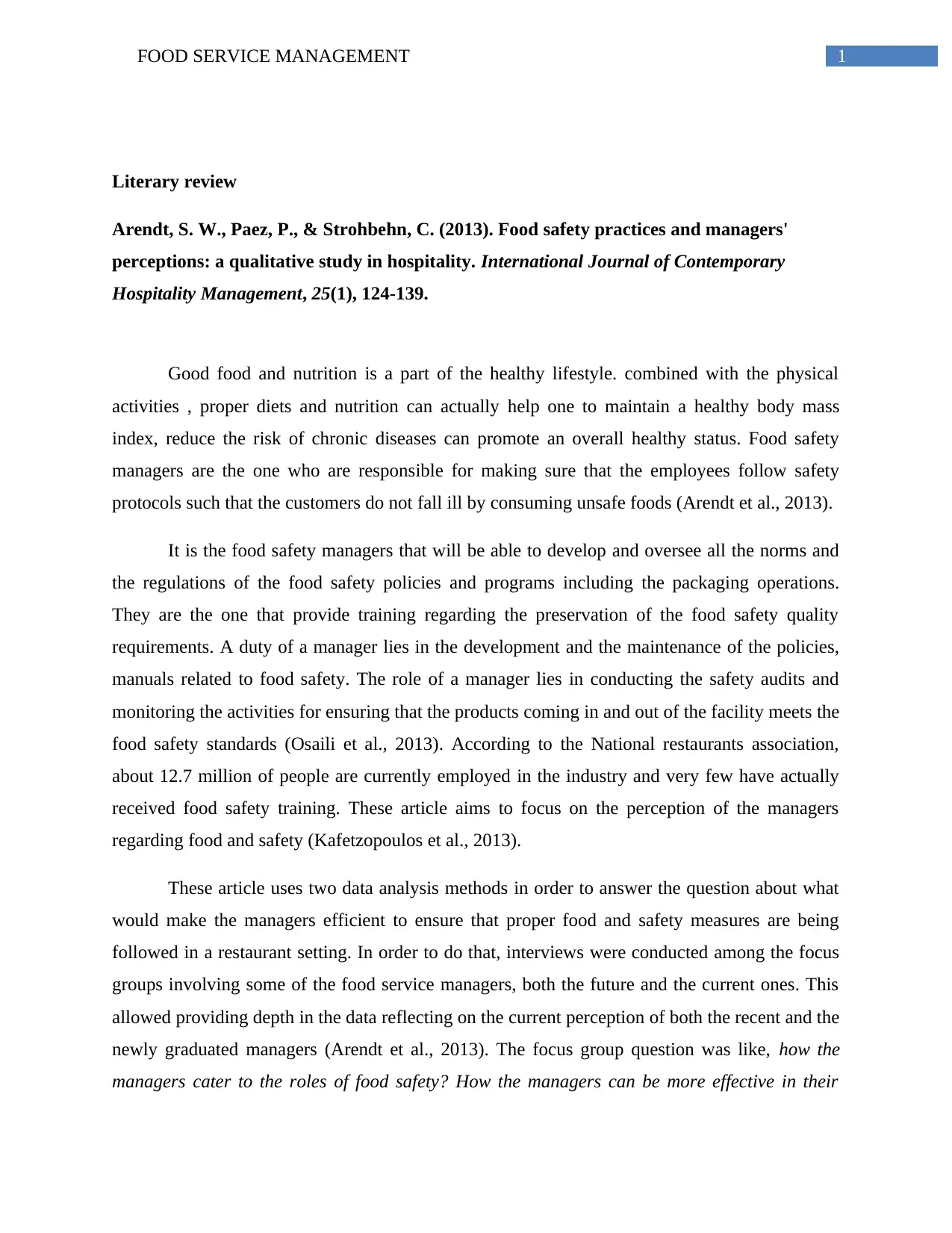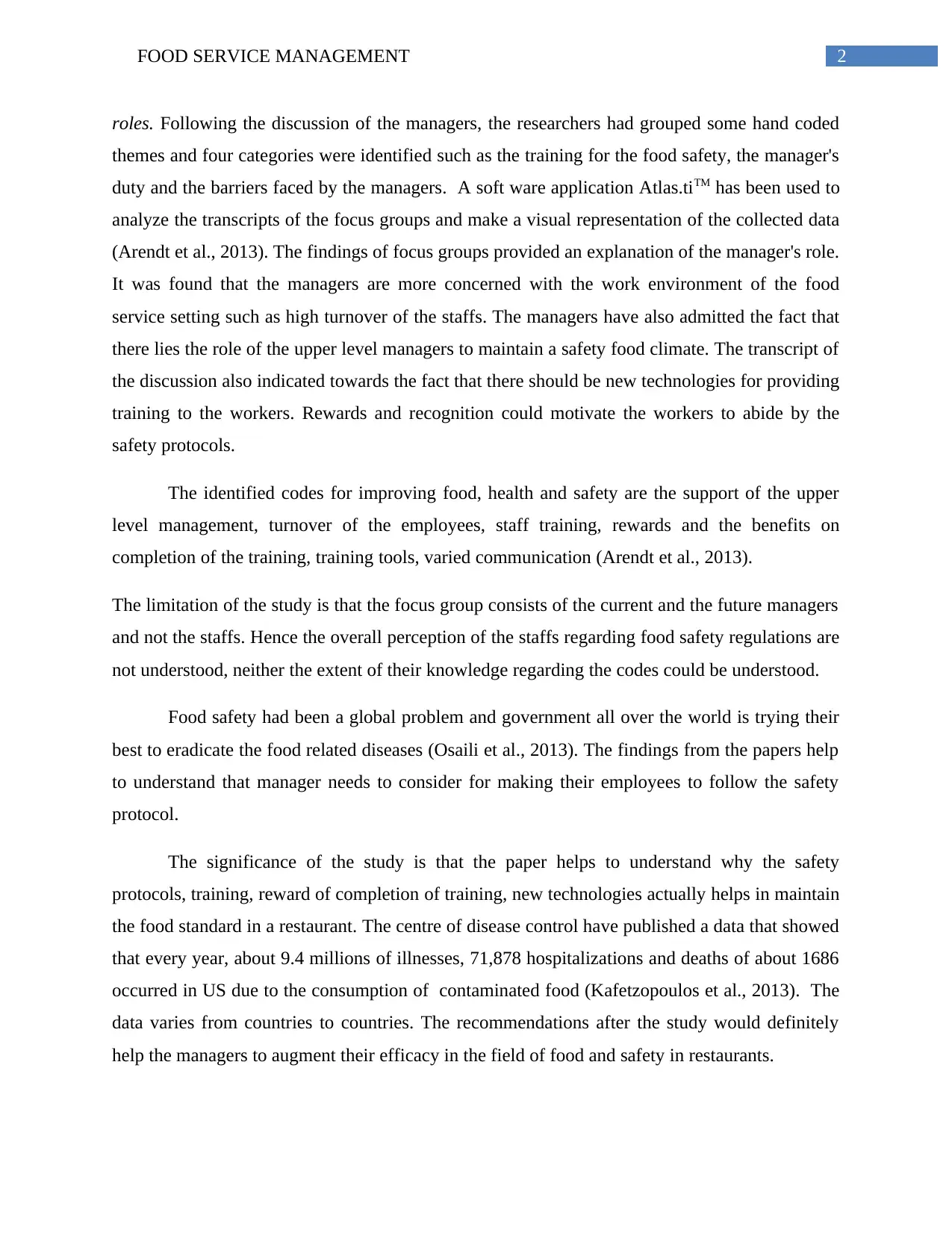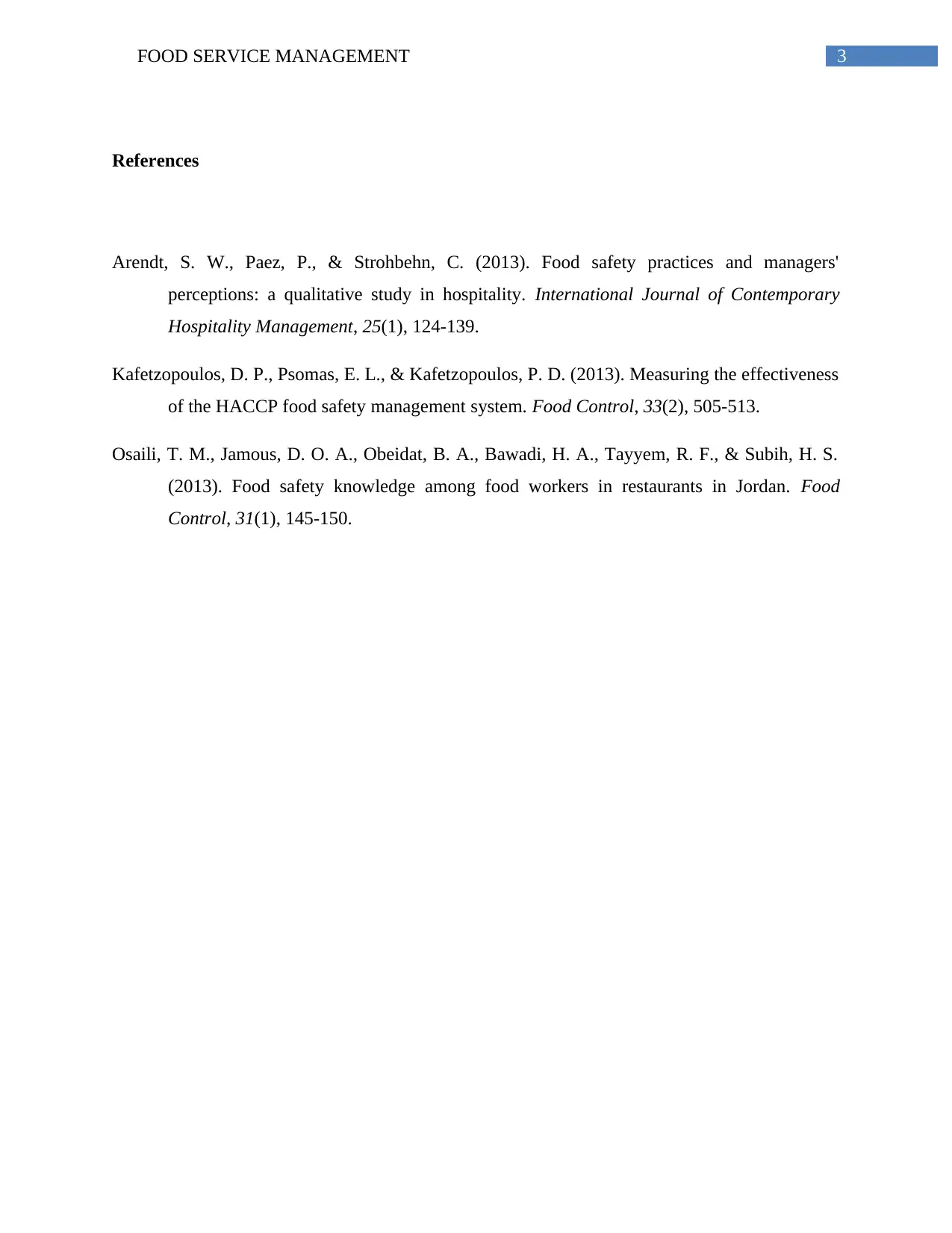Literary Review: Food Safety Practices and Managerial Perceptions
VerifiedAdded on 2021/04/24
|4
|1032
|80
Report
AI Summary
This report presents a literary review on food safety management within the food service industry, focusing primarily on the perceptions and practices of managers in restaurant settings. The review synthesizes findings from various research papers, including a qualitative study examining food safety practices and managers' perceptions, which highlights the importance of food safety training, managerial duties, and the challenges faced by managers, such as high staff turnover. The research underscores the significance of upper-level management support, staff training programs, and the implementation of new technologies to enhance food safety protocols. The review also discusses the impact of foodborne illnesses, emphasizing the need for effective food safety measures to protect public health and minimize the risks associated with contaminated food. The analyzed studies suggest that managers need to consider safety protocols for their employees in order to maintain a safe food standard in restaurants. The report concludes by emphasizing the importance of continuous improvement in food safety practices and the role of managers in ensuring the health and safety of consumers.
1 out of 4











![[object Object]](/_next/static/media/star-bottom.7253800d.svg)